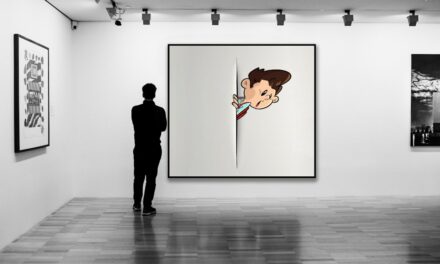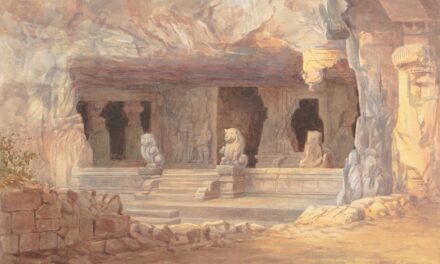Agostino Carracci was born in 1557 in Bologna, Italy, into a family that would become pivotal in the evolution of Baroque art. His early life was marked by a burgeoning interest in the visual arts, which was nurtured by the rich cultural environment of Bologna, a city renowned for its artistic heritage. Agostino’s father, a tailor, and his mother, a homemaker, provided a modest upbringing, yet they encouraged their son’s artistic inclinations.
From a young age, Agostino displayed a remarkable talent for drawing, which led him to pursue formal training in the arts. He initially apprenticed with a local painter, where he honed his skills and developed a keen understanding of composition and colour. As he matured, Agostino’s education expanded beyond the confines of his apprenticeship.
He immersed himself in the study of classical art and the works of the Renaissance masters, which profoundly influenced his artistic development. The vibrant atmosphere of Bologna, with its rich tapestry of artistic innovation, provided an ideal backdrop for his education. Agostino was particularly inspired by the works of artists such as Raphael and Michelangelo, whose mastery of form and narrative would leave an indelible mark on his own style.
This early exposure to both local and classical influences laid the groundwork for Agostino’s future contributions to the art world.
Summary
- Agostino Carracci was born in Bologna, Italy in 1557 and received his artistic training from his cousin Ludovico Carracci.
- He was influenced by the works of Correggio and Parmigianino, and developed a style that combined elements of naturalism and classicism.
- Agostino, along with his brother Annibale and cousin Ludovico, founded the Carracci Academy, which aimed to reform the prevailing Mannerist style of art.
- Some of Agostino’s notable works include “The Communion of St. Jerome” and “The Lamentation of Christ,” and he received commissions from prominent figures such as Pope Clement VIII.
- Agostino played a crucial role in the Carracci family workshop, contributing to the success and legacy of the renowned artistic dynasty.
Artistic Influences and Style
Influence of the Carracci Family
One of the most significant influences on Agostino’s style was his exposure to the works of the Carracci family, particularly his cousin Annibale Carracci. Together, they sought to establish a new artistic language that moved away from the mannerism prevalent in their time. They emphasised a return to nature and the human experience, focusing on realism and emotional expression.
Capturing Human Emotion
Agostino’s ability to capture the subtleties of human emotion and interaction set him apart from many of his contemporaries. His use of colour was equally innovative; he employed a vibrant palette that enhanced the emotional resonance of his subjects, creating works that were both engaging and thought-provoking.
A Unique Artistic Voice
Agostino’s distinctive style, which blended elements of the Renaissance and Baroque movements, allowed him to create a unique artistic voice that was both of its time and ahead of its time. His innovative approach to art paved the way for future generations of artists, cementing his place as one of the most important figures in the history of art.
The Carracci Academy
In 1582, Agostino Carracci co-founded the Carracci Academy in Bologna alongside his cousin Annibale and brother Ludovico. This institution was revolutionary for its time, as it aimed to provide a structured approach to artistic training that combined theoretical knowledge with practical skills. The academy became a hub for aspiring artists, fostering a collaborative environment where students could learn from one another and from their esteemed instructors.
Agostino played a crucial role in shaping the curriculum, emphasising the importance of drawing from life and studying classical works. The Carracci Academy distinguished itself by promoting a philosophy that celebrated both technical proficiency and creative expression. Agostino’s teachings encouraged students to explore their individual styles while grounding their work in the principles of classical art.
This approach not only elevated the standards of artistic education but also contributed to the broader cultural landscape of Bologna. The academy attracted numerous talented artists who would go on to make significant contributions to Baroque art, further solidifying Agostino’s legacy as an influential educator and mentor.
Notable Works and Commissions
Throughout his career, Agostino Carracci produced a remarkable body of work that showcased his artistic prowess and versatility. Among his notable commissions is the fresco cycle for the Palazzo Fava in Bologna, which exemplifies his ability to blend narrative with decorative elements. The frescoes depict scenes from classical mythology and history, rendered with a vibrancy that captures the viewer’s imagination.
This work not only highlights Agostino’s technical skill but also his capacity to convey complex stories through visual means. Another significant piece is “The Virgin and Child with Saints,” which reflects Agostino’s mastery of religious themes. In this work, he skillfully balances figures within a harmonious composition, employing chiaroscuro to create depth and dimension.
The emotional expressions of the figures resonate with viewers, drawing them into the spiritual narrative. Agostino’s ability to infuse his religious works with human emotion set him apart from many of his contemporaries, making his pieces both relatable and profound.
Agostino’s Role in the Carracci Family
As a key figure within the Carracci family, Agostino played an instrumental role in shaping their collective artistic vision. His collaboration with Annibale and Ludovico was marked by mutual respect and shared ambition, as they sought to redefine the parameters of art during a time of significant cultural change. Agostino’s contributions were not limited to his own artistic output; he was also an influential mentor to younger artists within their circle, fostering an environment of creativity and innovation.
Agostino’s relationship with his cousins was characterised by a dynamic interplay of ideas and techniques. Together, they explored various themes and styles, often challenging one another to push the boundaries of their artistry. This collaborative spirit was evident in their joint projects, where each artist brought their unique perspective to create cohesive works that resonated with audiences.
Agostino’s role as both an artist and educator within this familial context solidified his position as a pivotal figure in the evolution of Baroque art.
Legacy and Impact on Baroque Art
The Carracci Academy’s Influence
The principles established at the Carracci Academy influenced countless artists who would go on to shape the Baroque movement, including prominent figures such as Guido Reni and Francesco Albani.
A New Artistic Language
Moreover, Agostino’s emphasis on naturalism and emotional expression resonated throughout Europe, inspiring artists across various regions to adopt similar techniques in their own work. His ability to blend classical influences with contemporary themes created a new artistic language that transcended geographical boundaries.
Enduring Contributions
As Baroque art continued to evolve, Agostino’s contributions remained relevant, serving as a foundation upon which later artists could build their own distinctive styles.
Personal Life and Relationships
Agostino Carracci’s personal life was marked by both professional collaborations and familial bonds that significantly influenced his work. He maintained close relationships with his cousins Annibale and Ludovico throughout his life, sharing not only artistic ideas but also personal experiences that shaped their collective identity as artists. Their camaraderie fostered an environment where creativity flourished, allowing them to support one another through both triumphs and challenges.
Despite his dedication to art, Agostino also experienced personal struggles that impacted his work. He faced periods of financial instability and competition within the artistic community, which at times led to tensions among family members. Nevertheless, these challenges did not deter him from pursuing his passion; rather, they often served as catalysts for growth and innovation in his art.
His ability to navigate these complexities while maintaining strong familial ties speaks volumes about his character and commitment to both his craft and loved ones.
Critical Reception and Contemporary Appreciation
Agostino Carracci’s work has garnered significant critical acclaim over the centuries, with contemporary scholars recognising his contributions as foundational to the Baroque movement. Art historians have praised his ability to merge technical skill with emotional depth, highlighting how his works resonate with viewers on multiple levels. His innovative approach to composition and colour has been studied extensively, influencing modern interpretations of Baroque art.
In recent years, exhibitions dedicated to Agostino’s work have emerged, showcasing not only his masterpieces but also illuminating his role within the broader context of art history. These exhibitions have allowed contemporary audiences to engage with his art in new ways, fostering appreciation for his unique contributions. As scholars continue to explore Agostino Carracci’s legacy, it becomes increasingly clear that he remains an essential figure in understanding the evolution of Western art during a transformative period in history.
His ability to blend personal expression with universal themes ensures that his work will continue to inspire future generations of artists and art enthusiasts alike.
For those interested in exploring different artistic techniques, a fascinating read can be found in the article Japanese Sumi-e Painting: Zen and Simplicity. This article delves into the traditional Japanese art form of Sumi-e painting, which focuses on capturing the essence of a subject with minimal brushstrokes. Just like Agostino Carracci’s attention to detail and skill in his artwork, Sumi-e painting also requires precision and a deep understanding of the medium. Both artists showcase a dedication to their craft that is truly inspiring.
FAQs
Who was Agostino Carracci?
Agostino Carracci was an Italian painter and printmaker, born in Bologna in 1557. He was a prominent figure in the Baroque art movement and was known for his contributions to the development of the Baroque style.
What is Agostino Carracci known for?
Agostino Carracci is known for his role in founding the Accademia degli Incamminati, a famous art academy in Bologna. He is also known for his skill in painting, particularly for his religious and mythological works.
What is the Accademia degli Incamminati?
The Accademia degli Incamminati was an art academy founded by Agostino Carracci and his cousin, Annibale Carracci, in Bologna in the late 16th century. It was a significant institution in the development of the Baroque style of painting.
What are some of Agostino Carracci’s notable works?
Some of Agostino Carracci’s notable works include “The Communion of St. Jerome,” “The Lamentation,” and “The Holy Family with St. John the Baptist.”
What was Agostino Carracci’s influence on Baroque art?
Agostino Carracci’s influence on Baroque art was significant, particularly through his role in founding the Accademia degli Incamminati and his innovative approach to painting. He was known for his emphasis on naturalism and his use of light and shadow in his works.



